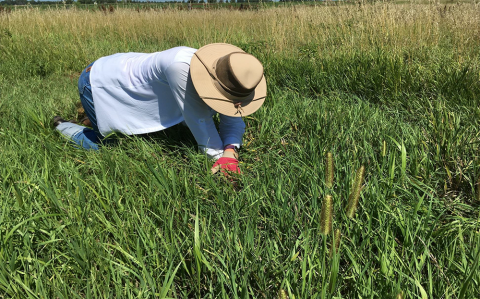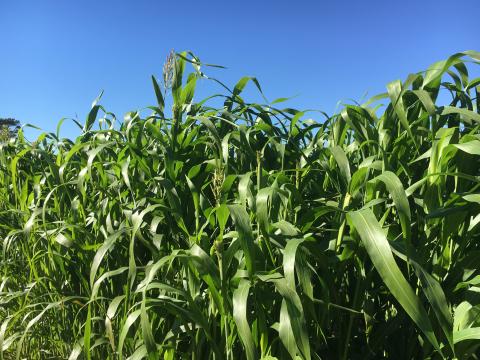Small Grain Annual Forages Following Soybean Production
December 2, 2016
This research brief looks at a three-year grazing trial addressing the question of what small grain is most suitable to plant after soybean to offer the best opportunity for grazing.
Value of Oats and Brassicas for Fall Forage
December 1, 2016
An overview of five experiments evaluating the use of winter-sensitive, cool-season species planted in mid-August after wheat or early September after corn silage harvest for grazing of fall-weaned calves during November and December.
High Quality Hay Still Brings Top Dollar
November 11, 2016
If you're sitting on some high-quality hay and planning to feed your livestock, consider whether the market adage to "Sell high, buy low" might offer some sage advise for the hay market too.
Student Research: Does the Grazing of Cover Crops by Cattle Compact Soil?
November 2, 2016
Undergraduate Rebecca Clay shares the results of her study on whether grazing cover crops contributed to soil compaction at four sites in west central and eastern Nebraska. Clay, an undergraduate student in the Iowa State University Department of Agronomy, conducted the study as part of a UNL Research and Extension Experiential Learning Fellowship in summer 2016.
Forage, Feed, and Grazing Restrictions for Row Crop Herbicides
November 1, 2016
As the end of corn harvest nears, some producers will soon be turning their cattle into corn stalks or cover crops to graze. Before taking this step, take time to review the labels from in-season and fall-applied herbicides for any grazing restrictions.
Student Research: Do Winter Annual Small Grains Reduce Perennial Grass Establishment?
November 4, 2016
Undergraduate Sarah Morton shares the results of her study on whether planting perennial grasses into small grain residue after grain harvest has an effect on establishment. Morton, an undergraduate student in the UNL Department of Agronomy and Horticulture, conducted the study for her Research and Extension Experiential Learning Fellowship in summer 2016.
Nitrate Nitrogen or Nitrate — What's the Difference?
October 26, 2016
I just got the nitrate test results back from the lab and the level was 3,000. Am I in trouble?
Student Research: Potential Benefits of Sorghum-Sudangrass as a Companion Crop to Establish Forage and Native Legume Species
October 5, 2016
Student research fellow Martina LaVallie shares the results of her study on the potential of using drought-tolerant sorghum-sudangrass as a companion crop to establish forage and legume species. LaVallie, who graduated from Augustana University in Sioux Falls, S.D., and is now a graduate student in the UNL Department of Agronomy and Horticulture, conducted the study as part of a UNL Research and Extension Experiential Learning Fellowship in summer 2016.




